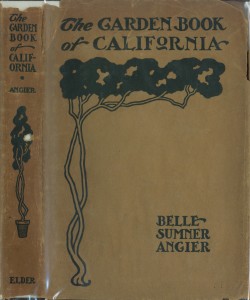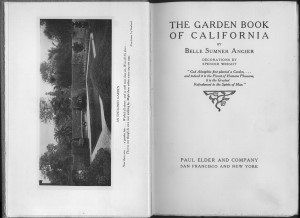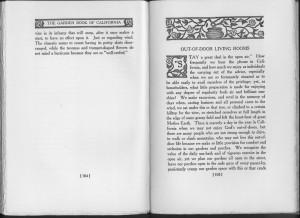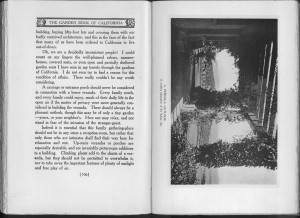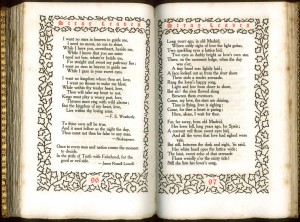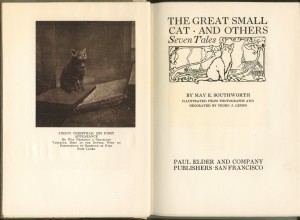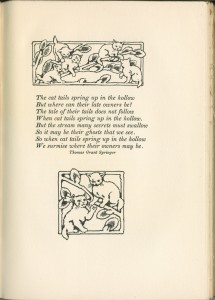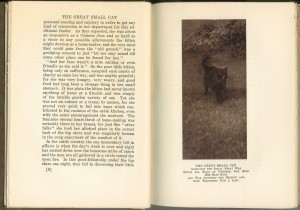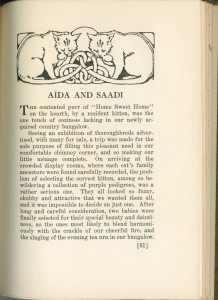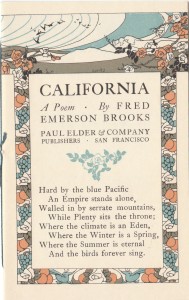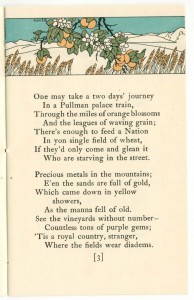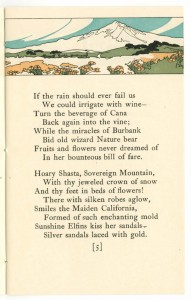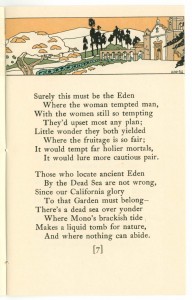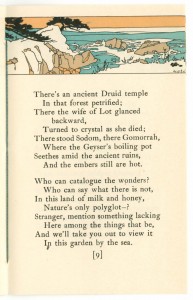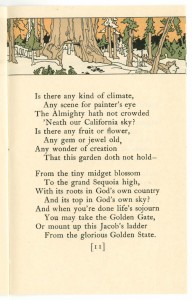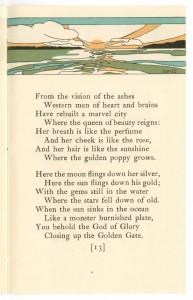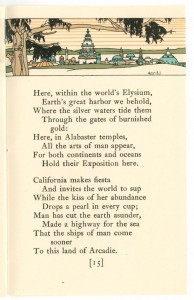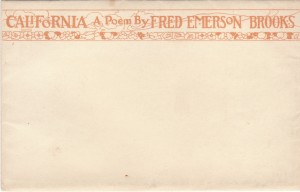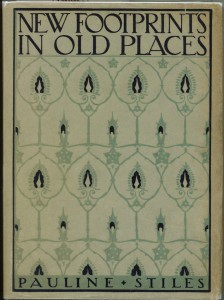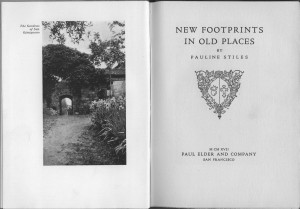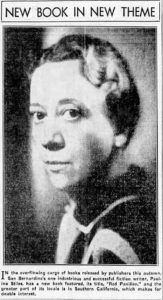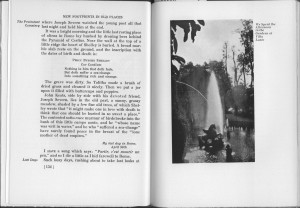The most famous sentence about gardening from California’s Arts & Crafts period is “Hillside Architecture is Landscape Gardening around a few rooms for use in case of rain.” Often ascribed to the poet and naturalist Charles Keeler, the line appears not in The Simple Home, as is sometimes cited, but in an untitled 1906 pamphlet distributed by Berkeley’s Hillside Club. The pamphlet’s author is probably either Annie Maybeck or her husband, architect Bernard Maybeck, whose architectural drawings are used as the pamphlet’s illustrations.
Belle Sumner Angier’s Garden Book of California is cut from the same cloth. She certainly would have known of Keeler and Maybeck, and it’s reasonable to suppose that he urged her to write the book. Angier harps on many of Keeler’s favorite topics: bad architecture, regular exercise and the stresses of modern life. Here’s an excerpt from the chapter “Out-of-door Living Rooms”:
“Stay a great deal in the open air.” How frequently we hear the phrase in California, and how much we enjoy as individuals the carrying out of the advice, especially when we are so fortunately situated as to be able easily to avail ourselves of the privilege; yet, as householders, what little preparation is made for enjoying with any degree of regularity fresh air and brilliant sunshine! … We recognize the value of the daily sun-bath and of vigorous exercise in the open air, yet we plan our gardens all open to the street, leave our porches open to the rude gaze of every passer-by, persistently cramp our garden space with this or that crude building, buying fifty-foot lots and covering them withour badly contrived architecture; and this in the face of the fact that many of us have been ordered to California to live out-of-doors.
…
Oh, we are a decidedly inconsistent people! I could count on my fingers the well-planned arbors, summer-houses, covered seats, or even open and partially sheltered garden seats I have seen in my travels through the gardens of California. I do not even try to find a reason for this condition of affairs. There really couldn’t be any worth considering.
…
The hills of Italy cannot give a more artistic vantage-spot for the pergola than do those of California. Amalfi and Ravello, Naples or Florence, can show no more beautiful opportunities for this form of out-of-door architecture than beautiful Belvedere, or Berkeley, or Montecito, or San Buenaventura, Los Angeles or San Diego.
…
The common use of rustic work that is extravagantly artificial in character, the too often bizarre and unreal forms that are used in the making of garden-houses in some way seem to disturb the sense of harmony. And yet the garden-house, the arbor and the pergola may all be made so satisfying to family life—so important to American family life—since they offer inducements toward a measure of relaxation almost foreign to our people without which we shall continue to earn the title of the most nerve-worn nation of the earth.
Little is known about Belle Sumner Angier. She was from Los Angeles, and perhaps was a staff writer for the Los Angeles Times and Los Angeles Express.
Decorations for the book are by Spencer Wright.
